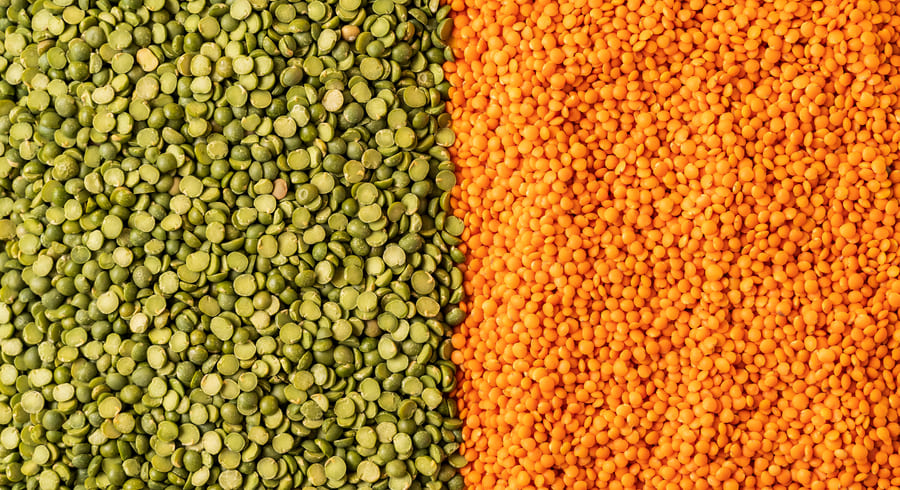Canadian lentils could fill gap from poor India pigeon pea stocks

India should be a red-hot market for lentils this year, according to a panel organized by the Global Pulse Confederation.
Rav Kapoor, chief executive officer of ETG Commodities Inc., thinks India will import up to 900,000 tonnes of the pulse crop in 2022-23. That would be a vast improvement over the previous year’s 667,000 tonnes.
He believes some pigeon pea demand will shift to lentils due to India’s poor kharif harvest, which has resulted in a price spike for the crop.
Kapoor believes India harvested a paltry three million tonnes of pigeon peas, down from the previous year’s 4.34 million tonnes due to lower acreage and excessive rain.
India will import pigeon peas from East Africa and Myanmar, but it will still be short and will need to augment that with about 200,000 to 300,000 tonnes of imported lentils.
That is in addition to the regular lentil demand of about 600,000 tonnes.
The imported lentils will come from Canada and Australia, he said.
Australia had been anticipating a bumper crop of 1.2 to 1.3 million tonnes of lentils but “the situation in Australia has significantly deteriorated,” said Kapoor.
Untimely rains and hail in Victoria, which is one of the main lentil producing states, have hurt production prospects.
He is forecasting 600,000 tonnes on the low side to 800,000 tonnes on the high side.
That will still leave about two million tonnes of total exportable stocks between Canada and Australia, which should be enough to meet India’s needs.
Kapoor said Australian lentils have been selling at a $40 to $50 per tonne discount to Canadian lentils in India, but he believes there will be parity by January due to the country’s shrinking crop prospects.
He believes lentil prices are close to bottoming out because there will be a spike in consumption at today’s values.
His India pulse crop outlook was far more bullish than the one provided by Gaurav Jain, analyst with AgPulse Analytica.
Jain is forecasting 590,000 tonnes of lentil imports, well below the record of 1.12 million tonnes set in 2020-21.
“We don’t see a much bigger demand than this,” he said during the GPC’s recent India Roundtable webinar.
The country has already imported 282,000 tonnes in the first six months of the 2022-23 Indian crop year, which ends in March 2023.
Lentils are allowed to enter the country duty-free until the end of March. After that it is anyone’s guess what the duty will be, said the panelists.
All the panelists are anticipating an increase in lentil area during the rabi planting season, which is now underway.
However, G. Chandrashekhar, senior editor of The Hindu Business Line, pointed out that as of Nov. 18, seeding was 250,000 acres behind the five-year average, though there is still time for the pace to pick up.
Jain is forecasting a rebound to 1.43 million tonnes of lentil production in 2023-24, up from a disappointing 1.3 million tonnes this year.
His pigeon pea estimate for 2022-23 was also substantially larger than Kapoor’s, at 3.69 million tonnes, which is still much smaller than the previous three years. The kharif pigeon pea crop was just recently harvested.
Jain is forecasting 800,000 tonnes of pigeon pea imports, up from the more typical 450,000 to 550,000 tonnes.
India imported 157,000 tonnes of the crop during the first half of the 2022-23 crop year. The bulk of the imports happen in the second half of the year, because that’s when East Africa’s crop arrives.
Domestic pigeon pea prices have shot up 36 percent since June due to the short crop.
Saurabh Bhartia, head of Glencore Agriculture India, was in Jain’s camp when it comes to the pigeon pea production estimate.
He said there was a 10 percent drop in acres and another 20 percent was abandoned due to excessive rain in July and August. But yields for the remaining crop were good.
Bhartia believes overall production is down 15 percent, which is the same number that Jain provided.
Lentil import demand will depend on the anticipated yields for the rabi crop that is being planted.
He estimates India could import 700,000 tonnes of lentils in 2022-23, which is higher than Jain’s number but lower than Kapoor’s.
Bhartia agreed with Kapoor that there could be a shift of some pigeon pea consumption to lentils, but that will likely occur in 2023-24.
“There is a possibility of 100,000 to 200,000 tonnes of higher consumption next year versus this year,” he said.
Imports in 2023-24 could be 800,000 tonnes, well above Jain’s forecast of 600,000 tonnes.
Read also
Wheat in Southern Brazil Impacted by Dry Weather and Frosts
Oilseed Industry. Leaders and Strategies in the Times of a Great Change
Black Sea & Danube Region: Oilseed and Vegoil Markets Within Ongoing Transfor...
Serbia. The drought will cause extremely high losses for farmers this year
2023/24 Safrinha Corn in Brazil 91% Harvested
Write to us
Our manager will contact you soon



